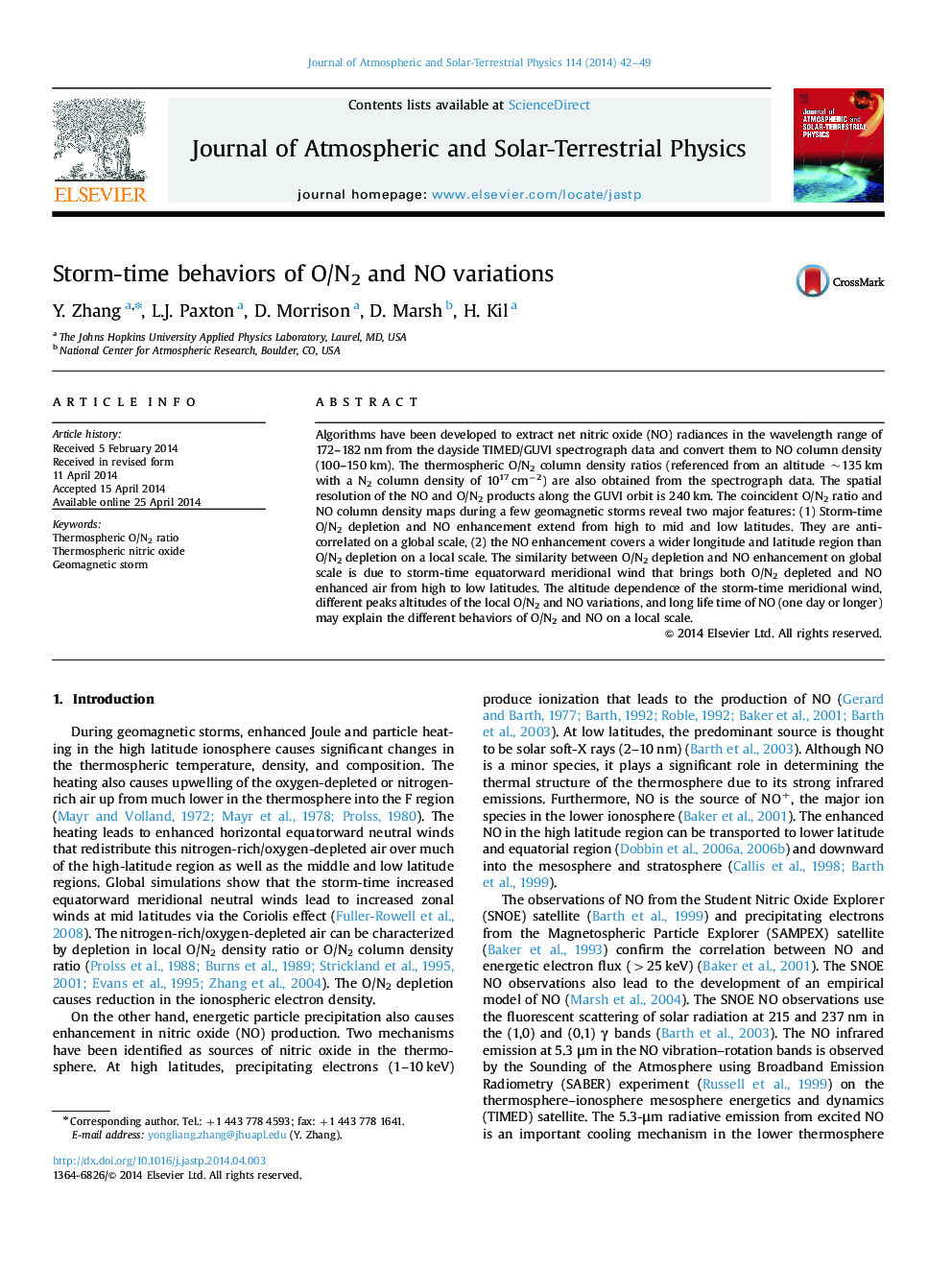| Article ID | Journal | Published Year | Pages | File Type |
|---|---|---|---|---|
| 1776579 | Journal of Atmospheric and Solar-Terrestrial Physics | 2014 | 8 Pages |
•A new algorithm is developed to extract the dayside net NO radiances (172–182 nm).•Converted the net NO radiances to NO column densities.•Anti-correlation between global thermospheric O/N2 and NO variations.•The NO changes cover a wider area than that of O/N2 on a local scale.
Algorithms have been developed to extract net nitric oxide (NO) radiances in the wavelength range of 172–182 nm from the dayside TIMED/GUVI spectrograph data and convert them to NO column density (100–150 km). The thermospheric O/N2 column density ratios (referenced from an altitude ~135 km with a N2 column density of 1017 cm−2) are also obtained from the spectrograph data. The spatial resolution of the NO and O/N2 products along the GUVI orbit is 240 km. The coincident O/N2 ratio and NO column density maps during a few geomagnetic storms reveal two major features: (1) Storm-time O/N2 depletion and NO enhancement extend from high to mid and low latitudes. They are anti-correlated on a global scale, (2) the NO enhancement covers a wider longitude and latitude region than O/N2 depletion on a local scale. The similarity between O/N2 depletion and NO enhancement on global scale is due to storm-time equatorward meridional wind that brings both O/N2 depleted and NO enhanced air from high to low latitudes. The altitude dependence of the storm-time meridional wind, different peaks altitudes of the local O/N2 and NO variations, and long life time of NO (one day or longer) may explain the different behaviors of O/N2 and NO on a local scale.
